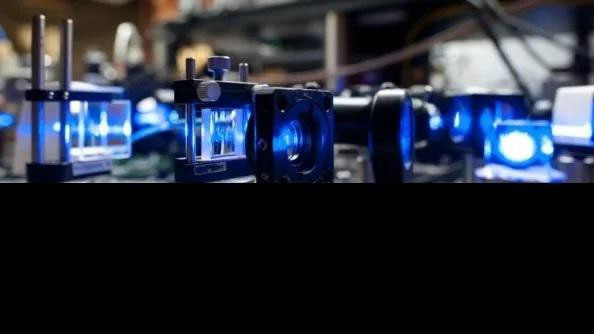A strange quantum effect predicted decades ago has finally been demonstrated. If you cool and condense a gas cloud enough, you can make it invisible. This technique could be used to prevent information loss from quantum computers.
Scientists at the Massachusetts Institute of Technology (MIT) in the United States have used lasers to compress and cool lithium gas to a density and temperature low enough that it scatters less light. They claim that if they could cool the gas cloud to -273.15 degrees Celsius, it would become completely invisible.

Blue laser light used in the Pauli blocking experiment makes matter invisible.
This strange effect is the first concrete example of a quantum mechanical process known as Pauli blocking.
Senior author of the study Wolfgang Ketterle, a physics professor at MIT, stated: “This is the first clear observation showing that this effect exists, and it reveals a new phenomenon in physics.”
This new technique could be used to develop light-blocking materials to prevent information loss in quantum computers.
Pauli blocking arises from the Pauli exclusion principle, which was first proposed by the famous Austrian physicist Wolfgang Pauli in 1925. Pauli suggested that all so-called fermion particles—such as protons, neutrons, and electrons—cannot exist in the same quantum state within the same space.
The exclusion principle also applies to atoms in a gas. Typically, atoms in a gas cloud have plenty of space to bounce around, but they still have enough energy levels to jump in without significantly hindering their motion.
Researchers explained that at that moment, they were stacked on top of each other. They were packed so tightly that the particles could not interact with light. The light sent in was blocked by Pauli and would pass straight through.
However, bringing an atomic cloud to this state is very challenging. It not only requires extremely low temperatures but also necessitates that the atoms be compressed very tightly.
Two other independent groups have also cooled two other types of gases, namely potassium and strontium, to demonstrate this effect. In experiments with strontium, researchers blocked excited atoms to keep them in an excited state for longer.
Ultimately, the researchers demonstrated the Pauli blocking effect and were able to use it to develop light-blocking materials. This will be particularly beneficial for improving the efficiency of quantum computers, which are currently hindered by quantum entanglement degradation—loss of quantum information (carried by light) to the surrounding environment of the computer.


















































